This is a guest post by Jacqueline Kieu.
Uzbekistan is the perfect destination for travelers looking for a rich cultural and historic experience thanks to its central location along the historic Silk Road Route and handful of well-preserved UNESCO sites and cities.
I spent one month in here and have compiled the absolute must-see places to visit with 10 days in Uzbekistan. Here’s where to go and what to see with a 10-day itinerary in Uzbekistan:
Tashkent: Two Days
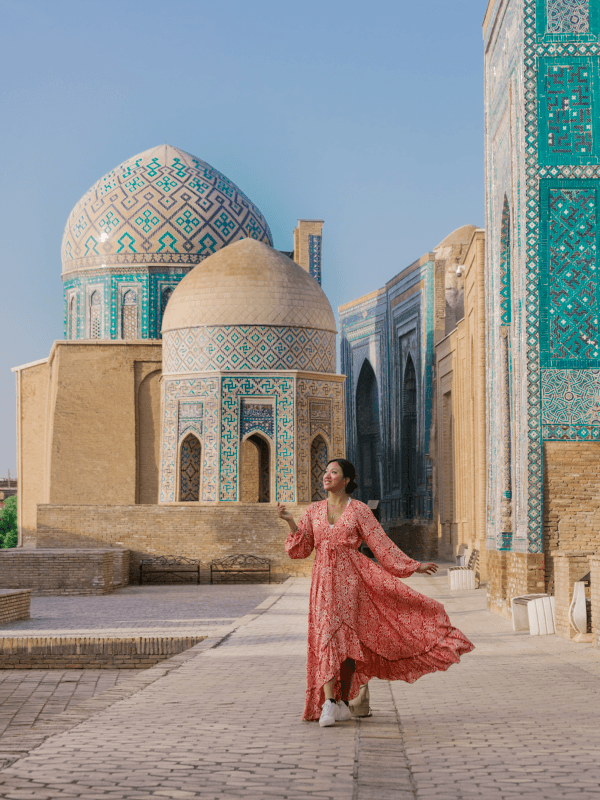
Almost all travelers will begin in Tashkent, the capital city of Uzbekstan.
As the largest city in Central Asia, this sprawling metropolis is home to over 3 million people. It’s a fascinating place; a city that straddles a fine line between the old and new world.
Visitors in Tashkent willl find 1970s Soviet era architecture, which offer a sense of nostalgia amidst the otherwise modern buildings. The city is surprisingly clean, with wide tree-lined sidewalks and tons of parks and green spaces for leisure.
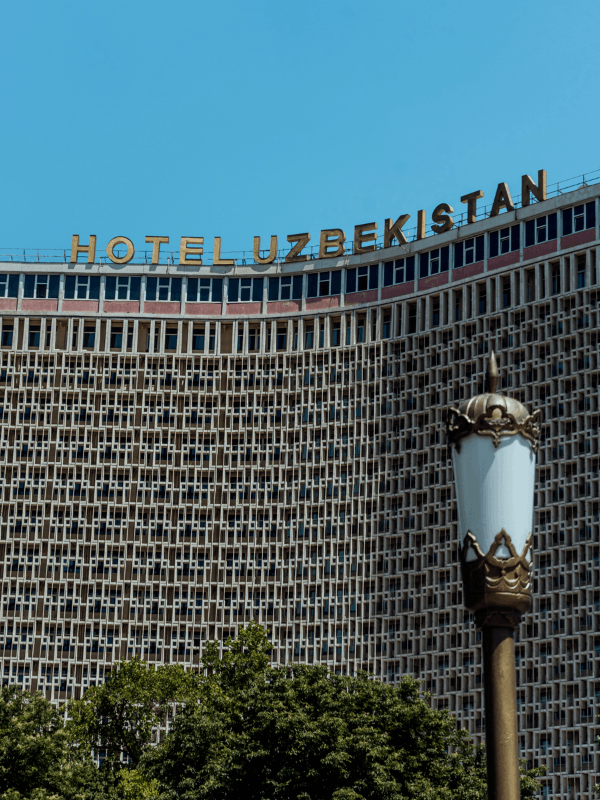
Many travelers tend to blast through Tashkent in a day (or less) because they are only interested in the Silk Road sites. Don’t make this mistake. To know Tashkent is to understand modern Uzbek culture.
You should spend at least half a day getting completely and utterly lost in the Chorsu Bazaar, a sprawling maze of outdoor shopping, eating, and overall insanity.
I recommend going in the morning and visiting the food market section, then grabbing some fresh non bread from Chorsu bakery while learning the unique way they bake it. Here’s a hint: it involves them sticking their whole body inside a burning oven.
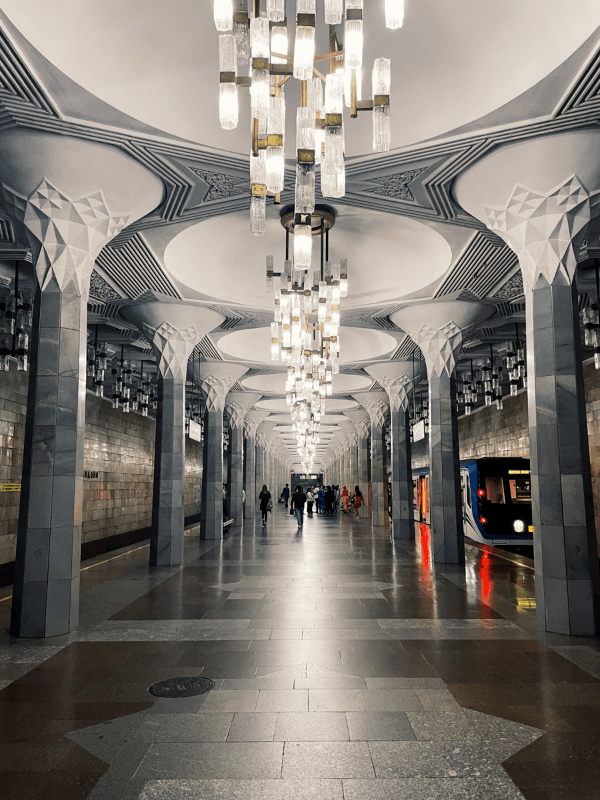
Then, get lost again by attempting to take the metro. The metro is actually very well laid out, but challenging to decipher unless you can read Cyrillic. Anyway, it really doesn’t matter where you go, just be sure to check out the metro stations themselves as they are literally the most unnecessarily beautiful ones I’ve ever seen. My personal favorite was the Alisher Navoi Station, but each has their own unique design.
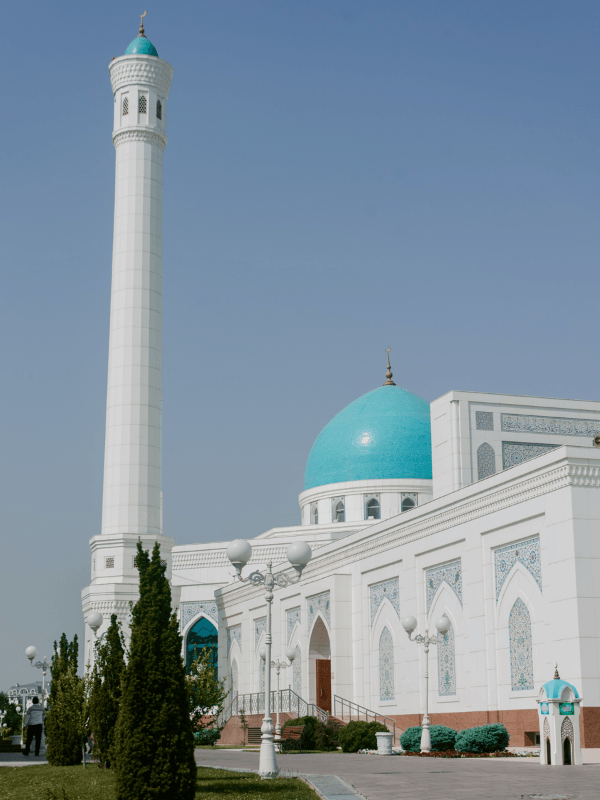
At some point, take a detour to marvel at the Minoor Mosque, also known as the White Mosque. Then spend an afternoon walking the lengths of Navoi Avenue, stopping along the way to check out the many parks and memorials.
Where to eat in Tashkent

The best part of Tashkent is the food. As the capital, you have access to a huge variety of national dishes at non-tourist prices.
Some of the best places in Tashkent for local eats are at the Chorsu Bazaar streetfood stalls and the National Food Hall. Look out for local goodies like plov (fried rice), samsa (meat pastry), fried lagman (noodles), meat skewers, and, if you dare, narib (shredded horse and cheese salad).
Samarkand: Three Days
From Tashkent, kick off your tour of the historic Silk Road Route by heading to the crowning jewel of the Silk Road itself – Samarkand.
Historically, Samarkand is one of the most important trade and culture hubs on the SIlk Road. As the former seat of rulers and nobility, you’ll find some of the most grandeur of palaces and monuments in the country right here.
The most famous landmark in Uzbekistan is without a doubt the Registan in Samarkand. This UNESCO site is a huge complex of 3 very old, very famous madrasas, or celebrated schools of Islam.
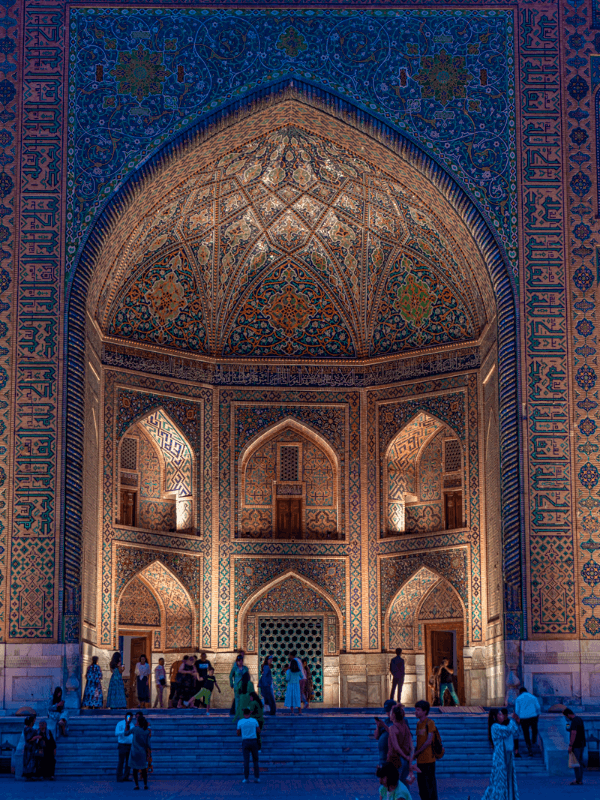
Each madrasa was built during a different period of history, but all came together to form what is now Registan square. You’ll find the most meticulously detailed tilework all throughout the Registan providing the most aesthetic of sights. My advice is to come around sunset and stay for the evening light show.
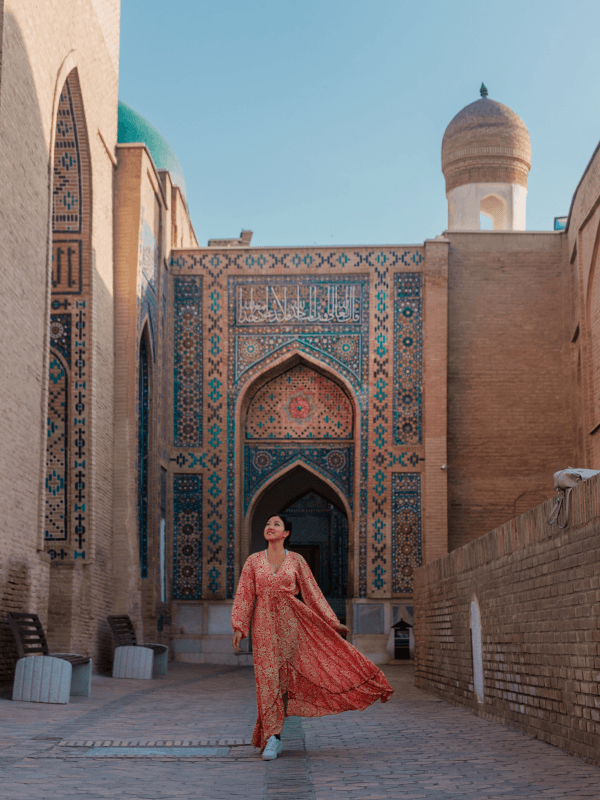
You should also plan to wake up for sunrise at least once to visit the Shah-i-Zinda mausoleum. This place gets crazy crowded after 8 am, so it’s best to start early. Plus, you have the most beautiful light reflecting off the tiles in the morning that make for stunning photography opportunities.
Another must visit is the mausoleum of Amir Timur, the founder of the Timur Empire and one of Uzbekstan’s most loved historical figures.
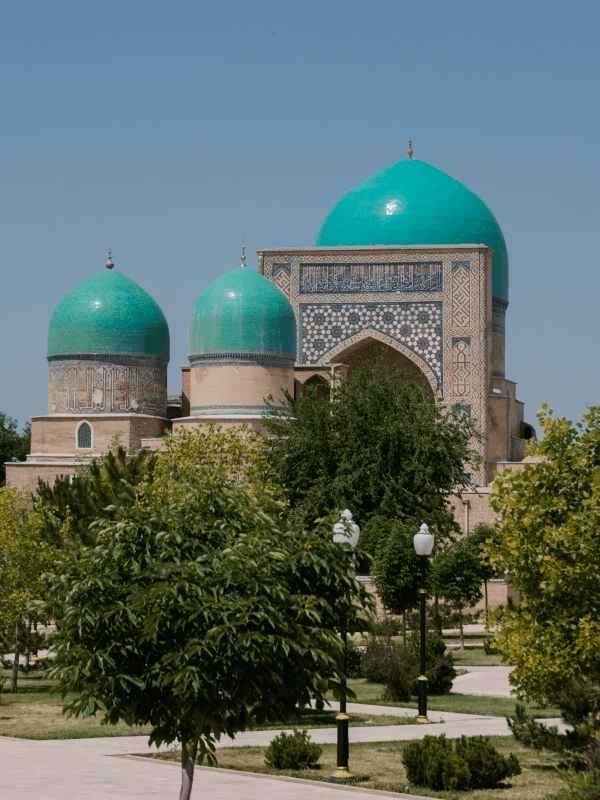
There are so many other landmarks to visit in and around Samarkand. Some I’d suggest are the Bibi-Khanyn Mosque, the Observatory or Ulugbek and the Silk Road Samarkand. The latter is like a small themed shopping mall where they showcase all the different regional cultures of Uzbekistan.
I’d also recommend a day trip to Shahrisabz, another UNESCO site famously known as the birthplace of Amur Timur. I booked a tour directly with the Samarkand Tourist Information Center.
Where to eat in Samarkand
Art Cafe is the best place to try traditional dishes like plov and manti. For some awesome, freshly grilled meat skewers, head to Labi G’or.
Bukhara: Two Days
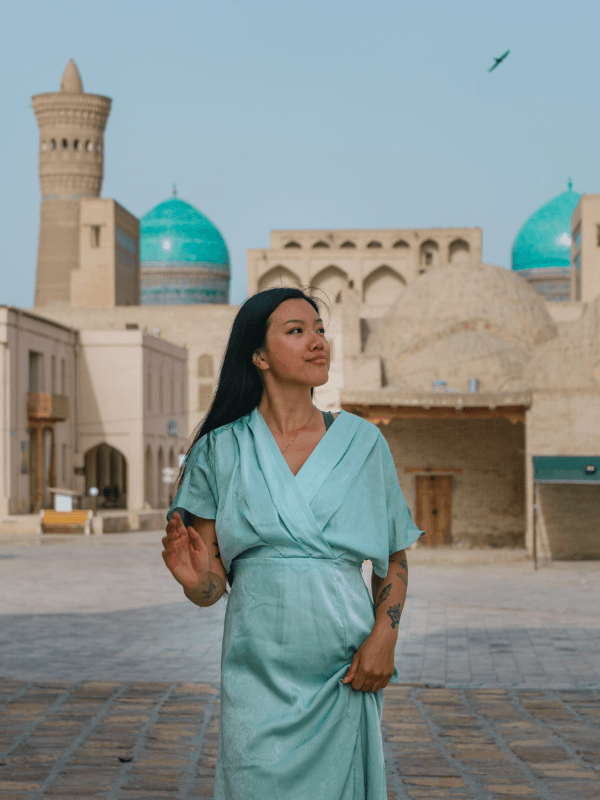
As a city with over 2,000 years of history, Bukhara is one of the most well preserved Islamic cities left in the world. To wander around the city is nothing short of time traveling.
You’ll pass by gorgeous madrasas tiles to the nines, impressive mosques that look ethereal when lit up at night, and tons of those iconic blue domed roofs.
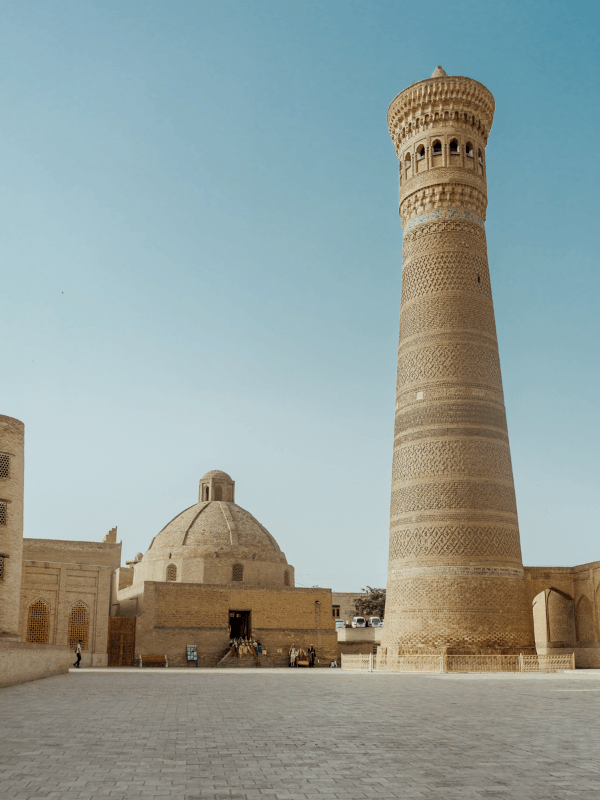
The most prominent landmark in Bukhara is the Kalon Minaret and the entire Kalon complex. This is a major square in the city center where you’ll find beautifully tiled facades in every direction. During the afternoons it seems to be a gathering point for locals to hang out.
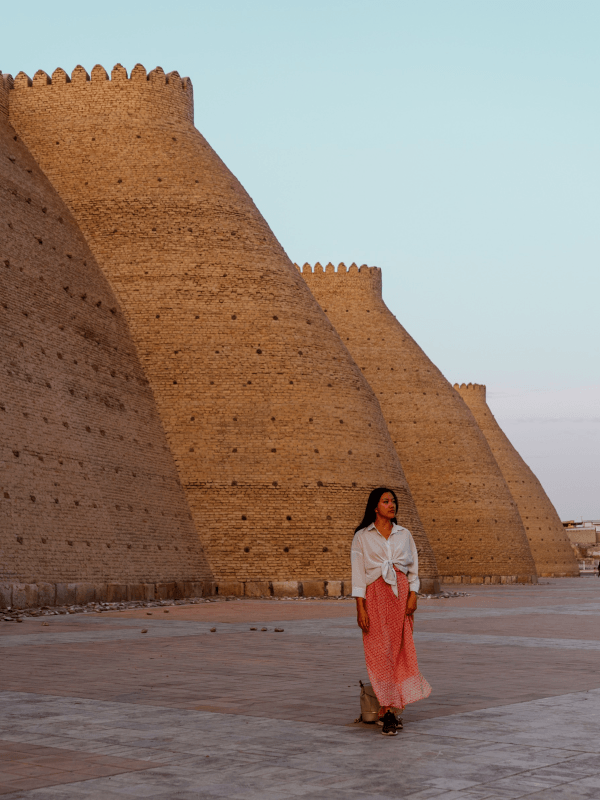
You can’t skip a visit to the Ark of Bukhara, the ancient outer walls of the city which now houses a museum. While here, be sure to head to the Bolo Hauz Mosque across the street as well.
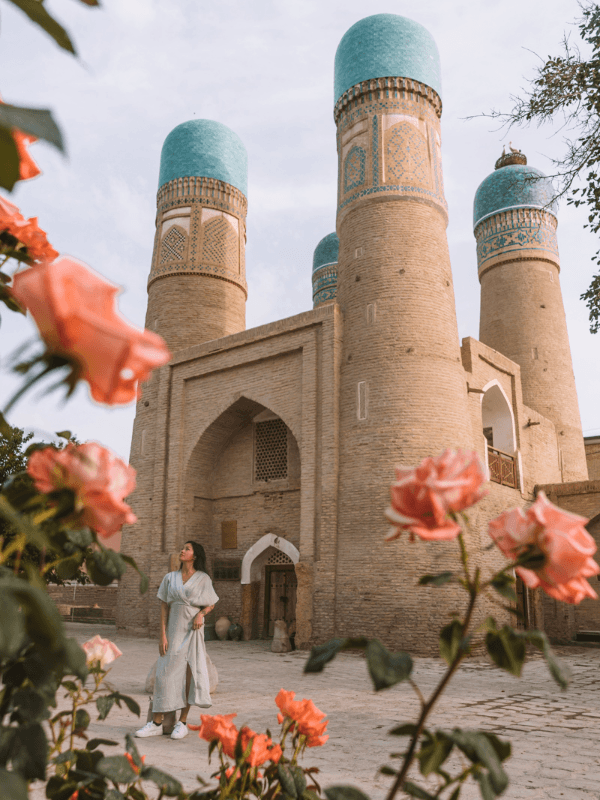
But the coolest mosque in Bukhara has to be Chor Minoor, found on the outskirts of town. This mosque is known for its characteristic 4 pillars that rise high above it’s roofs.
Once happy hour rolls around, head to the Divan-begi pond in the center of the old city, an incredibly romantic place for a glass of wine or dinner by the water.
Nearby is Nodir Devonbegi, formerly a revered madrasa which is now used to host nightly cultural dance performances.
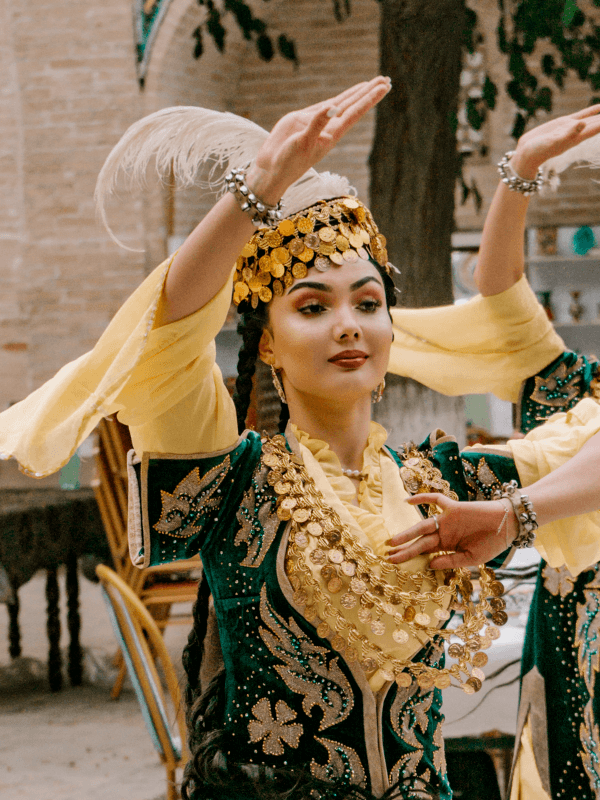
And if all else fails, you can’t go wrong in Bukhara by dropping everything to do some serious shopping. Bukhara is famous for it’s historic, covered shopping arcades that are still used today to house art galleries, souvenir shops, small cafes and more.
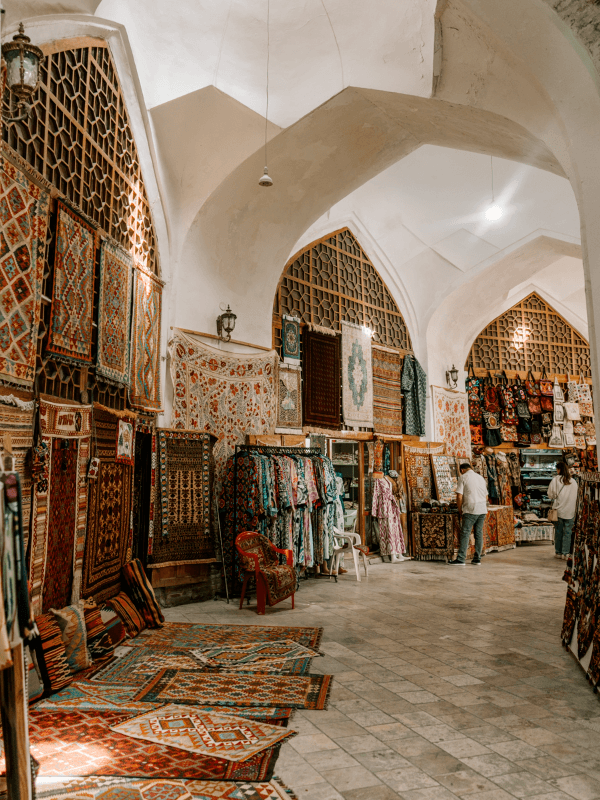
Where to Eat in Bukhara
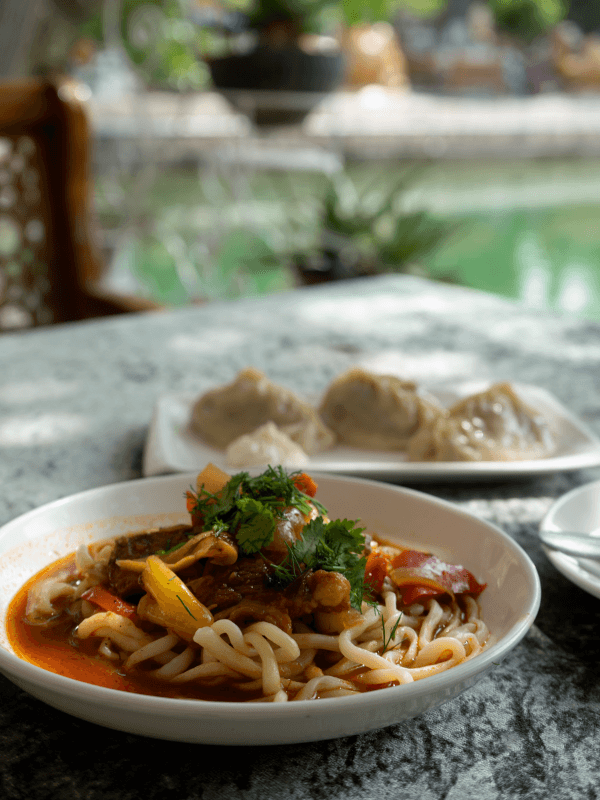
Labi Hovuz is the best place to eat in Bukhara for both the vibes and the food. They have a huge menu of all the local specialties, plus the added bonus of dining right alongside the pond.
I’d recommend the manti, Uzbekistan’s version of a dumpling and Bukhara style fried lagman (with tomato sauce).
Whenever the heat of the day becomes too much, head to Wishbone Cafe or Halva Cafe to relax and people watch.
Khorezm Fortresses: One Day
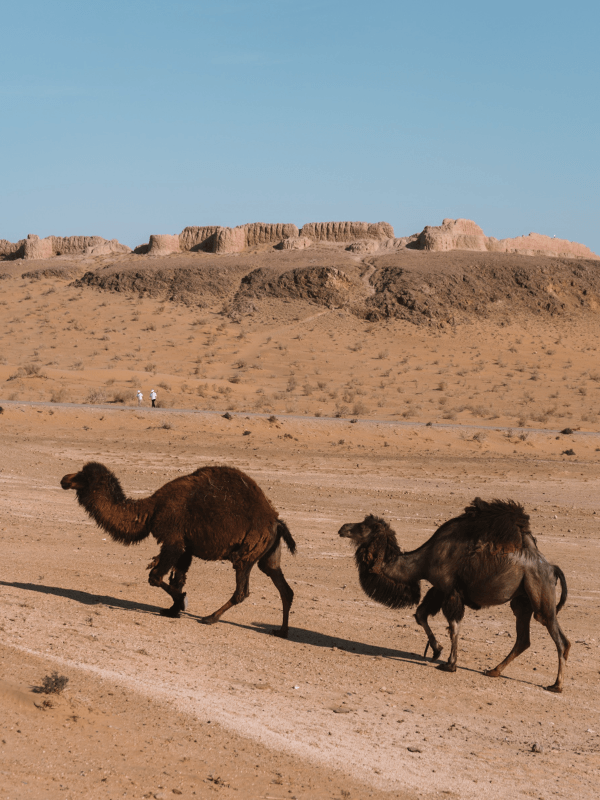
On your way to the last major stop on the Silk Road Route, you’ll pass through the Karakalpakstan Desert, the former site of ancient Khorezm civilization.
Khorezm is known as the Egypt of Central Asia and is home to some remarkable landmarks that are totally different from the glitzy, Silk Road cities. Instead of glittering blue domed mosques and tiled palaces, you’ll find sandy forts and ruins that have all but dissolved back into the desert.
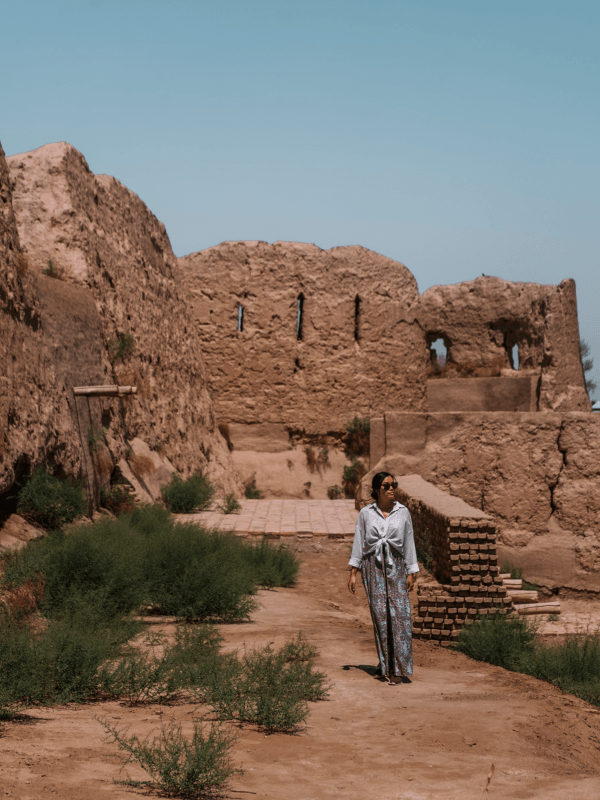
Spend a day exploring the desert and hopping around the many Khorezm fortresses. The best way to see the area is by hiring a driver for the day, or if you have your own rental car you can do a self-guided tour.
I strongly advise getting a guide because some of the sites aren’t properly marked on Google Maps or even the road signs. Plus, you have really patchy signal in this area making it all too easy to get lost.
I went with Islambek Tours and can report an amazing experience.

Booking a tour usually means you’ll visit between 3 to 10 of the ancient forts, depending on the tour you book. Today, some of these forts are nothing more than a small mound while others are like giant sandcastles. Each fort will have its own backstory explained on a plaque you’ll find on arrival.
The coolest part is how few people visit this area, so you can really get your Indiana Jones on and explore ancient ruins with virtually no one around.
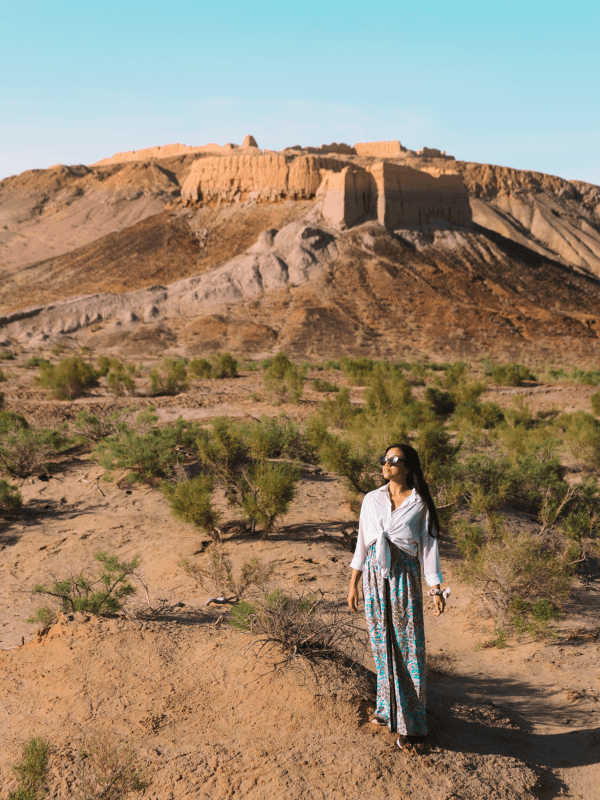
The best forts to visit are definitely Toprak Kala and Ayaz Kala, both of which are very well preserved and among the larger complexes.
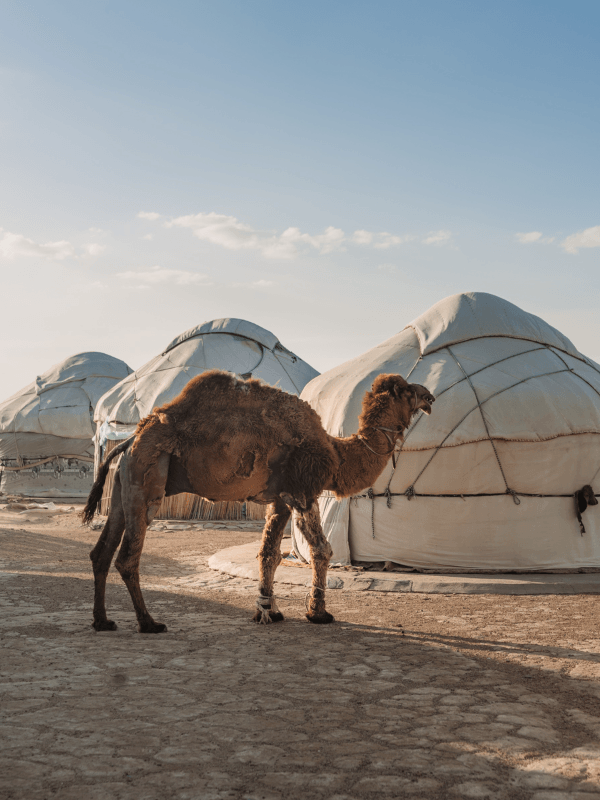
Ayaz Kala is also home to a yurt camp where you’ll find a semi-friendly population of free-roaming camels. If you’re up for it, you can stay overnight to get a feel for rural Uzbek life and a night of epic stargazing.
Khiva: Two Days
The last major stop on the Silk Road Route is Khiva. Some travelers skip it simply because it’s so much further from the other major cities, but that’s their loss because the journey is well worth it.
Khiva is a gem in the middle of an otherwise inhospitable desert. What was once a thriving, wealthy city thanks to booming trade, Khiva manages to hold onto it’s glorious past within it’s well preserved citadel walls.
Most of the sites in Khiva are found in the Itchan Kala fortress, a UNESCO site that can be deemed as an open air museum in it’s entirety.
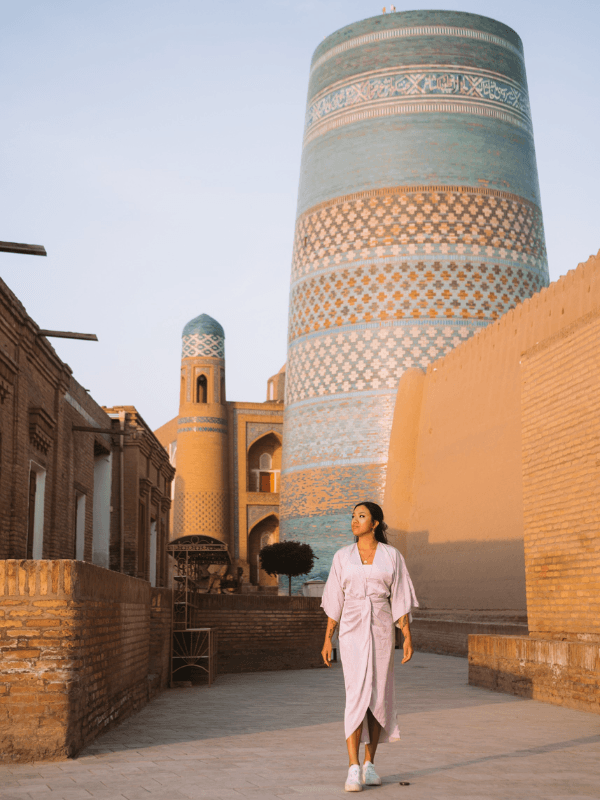
Probably the most impressive site is the Kalta Minor Minaret, a strikingly vivid turquoise tower that stands at 57 meter tall. This feat of wonder may not be the tallest minaret in Khiva, but it’s certainly has a way of dominating the skyline with its size and color.
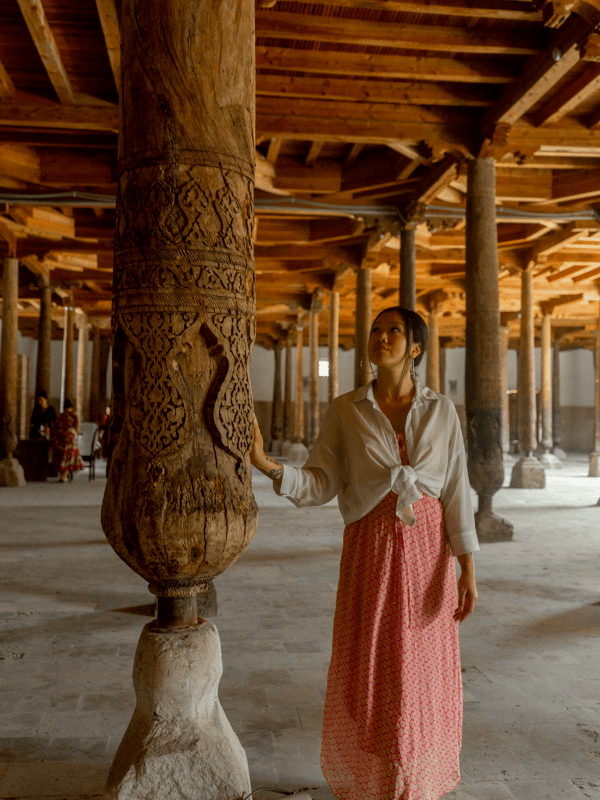
Next, you’ll want to visit the Juma Mosque for it’s ancient, traditionally carved wooden beams. This mosque does a great job of showcasing the local woodcarving craft, a longstanding practice amongst those in the region.
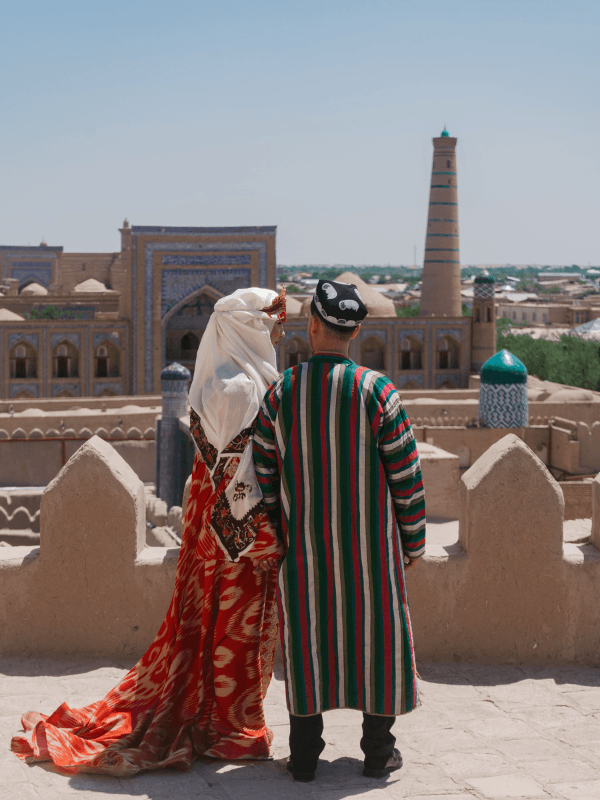
The Khuna Ark is where you’ll have the best views of the city from above and the most magical sunset of your life if you time your visit just right.
The Islam Kodja Minaret is another must-see site within Khiva, not that you could miss it if you tried. This is the tallest structure in Khiva itself, and can be seen throughout the fortress walls. The area underneath Islam Kodja is where you’ll find an outdoor bazaar of sorts selling all kinds souvenirs and local goods.
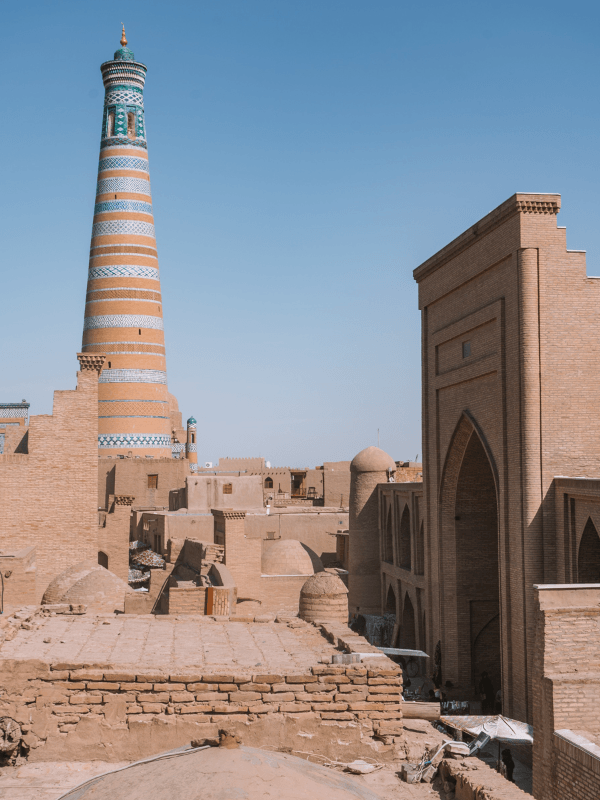
Overall, you can’t really go wrong with just wandering and getting lost while in Khiva. It felt like I could hardly wander more than 10 steps before stumbling upon another square or madrasa worth exploring.
Entry into Itchan Kala requires paid admission, even if your hotel is located there. The most common ticket for purchase is the 2 day pass which allows you free entry into almost all the museums, mosques and points of interest. You can buy the tickets at the West Gate on the day of arrival.
Where to eat in Khiva
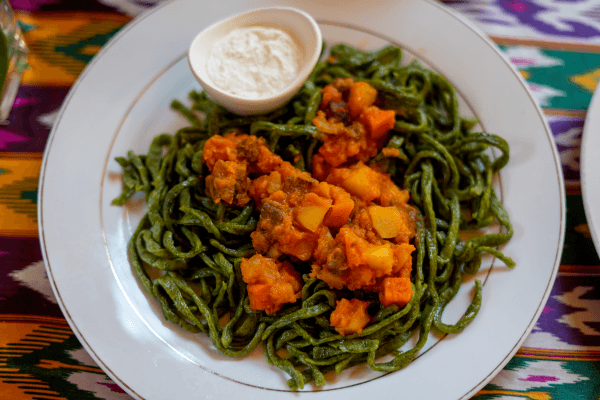
The most popular restaurant in Khiva is definitely the Terrace Cafe & Restaurant. They serve up all the local specialties you must try like Tukhum Barak (egg dumplings) and Shuveet Osh (dill noodles), or my favorite, fried eggplant and beef.
It’s best to come at sunset, as they offer an incredible view of Khuna Ark lighting up for the evening at this time. I highly recommend making a reservation through your hotel the night before as it does tend to get booked out each night.
Other places to see in Uzbekistan
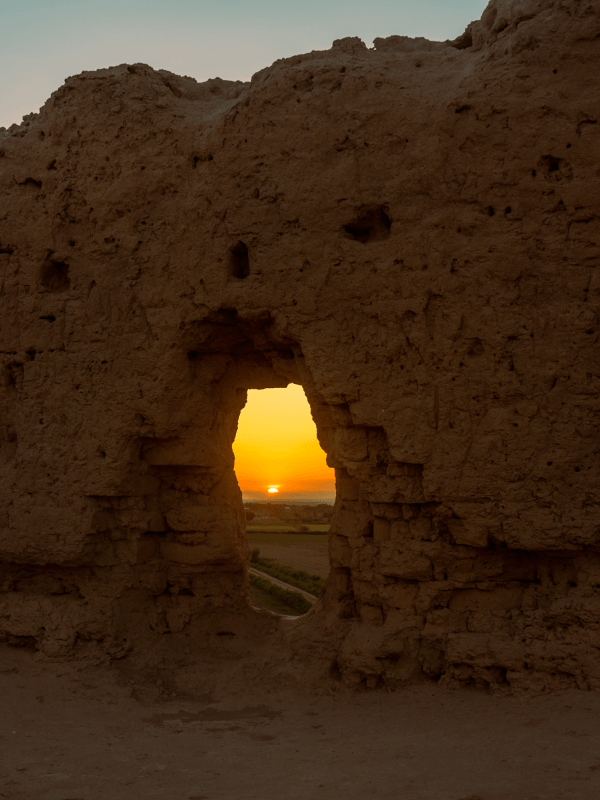
If you have more time in Uzbekistan, you have plenty of amazing places of the beaten path to explore.
If you seek adventure, head to the Kyzylkum Desert for epic desert nights and hiking. While there you can visit Aydar Lake, a vast, Soviet manmade lake. This lake is one of the best areas for bird watching as it’s home to over 100 species of waterbirds.
If you travel to the very western corners of the country, you can check out the Aral Sea, a dried up lake bed where you can find several shipwrecks arrested in decay.
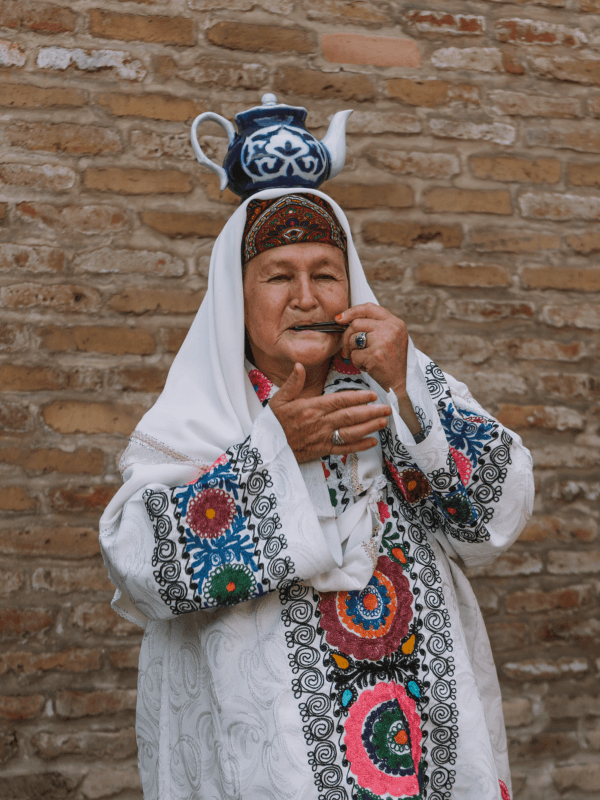
For more of Uzbek culture, opt to visit Boysun, especially during the Boyson Festival which takes place once every 2 years in spring.
For a chance to truly immerse yourself in local life, head to the Fergana Valley close to the Kyrgystan border. This area is known for agriculture and local craft making. It sees very few tourists but the reward is superb hiking trails the chance to connect with friendly locals.
Uzbekistan Travel Information
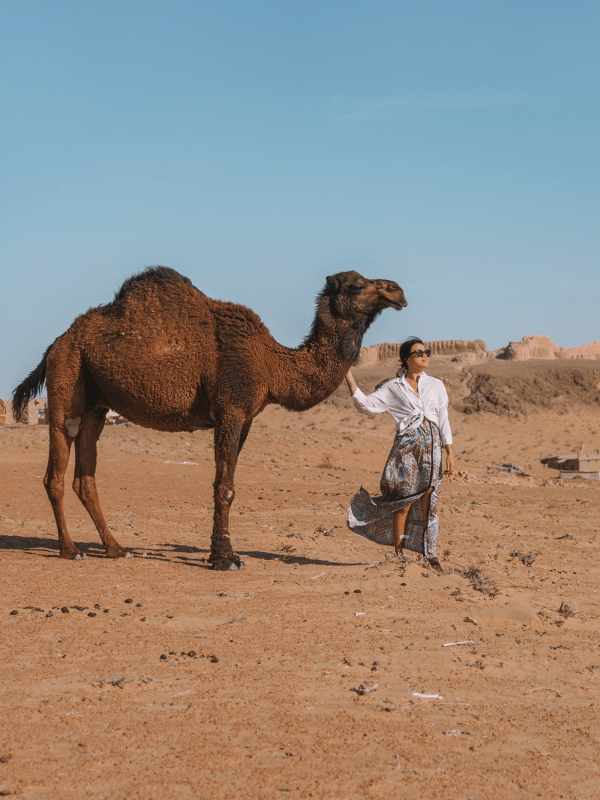
Visa Requirements
Visitors from most countries will require a visa for Uzbekistan, something that was notoriously difficult until recently.
Luckily, most nationalities are now allowed to apply for an e-visa for Uzbekistan, using the website here.
The fee is a flat rate of $20 USD, which will grant most tourists 30 days.
I wish I could say it was as easy as that, but many travelers (including me) have reported issues with the website, especially when it comes to uploading documents and processing the payment.
It’s also impossible to get ahold of anyone by phone or email, so make sure to apply for your visa at least 2 months ahead of your trip just in case you run into some roadblocks.
Best Time to Visit Uzbekistan
Most of Uzbekistan is characterized by an arid, desert landscape. This means that summers are scorching hot, and winters can get frigid cold.
The best time to visit Uzbekistan is probably in spring and fall when the weather is less extreme and much more comfortable.
If you choose to visit any time between March and May, you’ll be rewarded by great weather and the chance to attend one of Uzbekistan’s spring festivals. There’s the Navruz festival in March that is celebrated all over the country, or the Boysun Bahori Festival every 2 years in Boysun.
READ NEXT: 13 Things I Wish I Knew BEFORE Visiting Uzbekistan
Getting to Uzbekistan
Most travelers will get to Uzbekistan via air. Unless you are flying in from the Middle East or a nearby country, most flights will require a stopover somewhere. For travelers coming from North America, those flights tend to have a layover in Dubai, Abu Dhabi, or Kuwait.
If you plan to travel overland from Kazakhstan or Tajikistan, you’ll just need to be sure you have your documents and visa secured beforehand.
Getting Around Uzbekistan
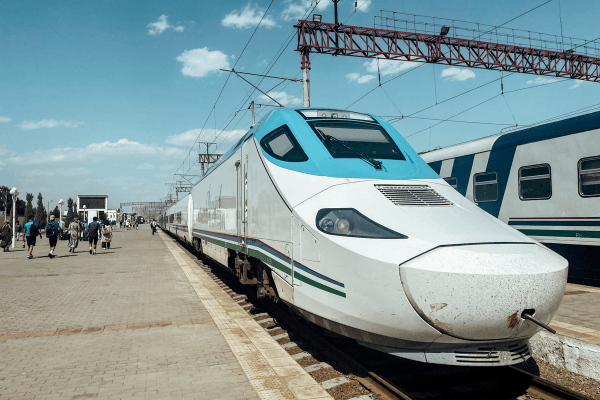
You have plenty of options for transportation in Uzbekistan.
Renting a car makes sense if you are traveling as a group. Uzbekistan is huge so this gives you the freedom to go wherever you please. The roads are not the best, but also not the worst.
Another option is to fly. All of the cities in this itinerary either have an airport or are within an hour of one. Flying in Uzbekistan is fairly cheap by western standards. Stil, it does add up, so it may not really be feasible if you’re on a tight budget.
There are also buses, but almost everyone I spoke to did not recommend them. Lateness and lack of comfort were among some of the feedback I heard.
In my opinion, the best way to get around is by train. Uzbekistan is reasonably well connected by a great train system. A 4 – 6 hour ride can cost as little as $9 USD. There are also super new high speed trains, known as Afrosiyob, which offer very modern and comfortable amenities that can easily compete with the trains of Europe.
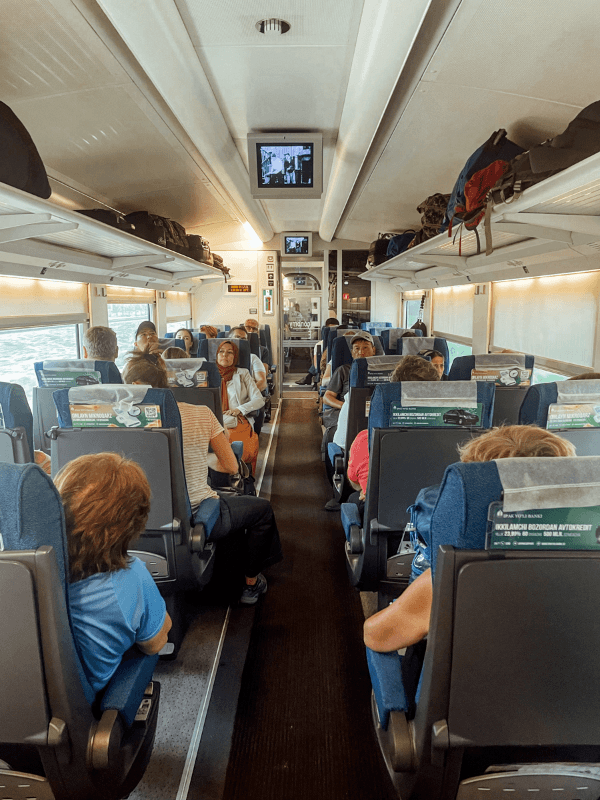
You can book your train tickets online though the Railway UZ website. Be sure to book a few days ahead as the seats do tend to fill up.
Within the city, you’ll want to download the Yandex Go app which is the primary rideshare app used in Uzbekistan. It works in all major cities and you can even link your credit card directly for convenience.
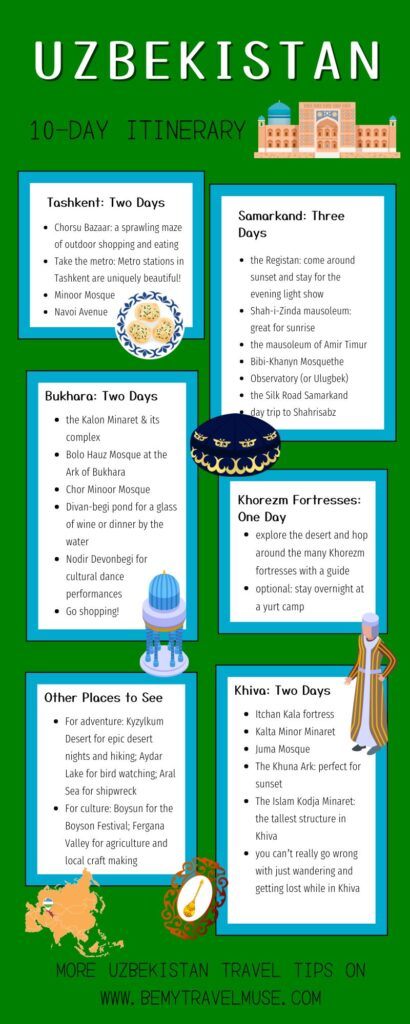
And that wraps up the perfect 10 day itinerary covering the best of what Uzbekistan has to offer. Happy travels!
About the author: Jacqueline is the author of Your Travel Flamingo, a website dedicated to digital nomad travel and, recently, Iceland travel. When she’s not on the road, she stays busy by exploring her homebase in Iceland.
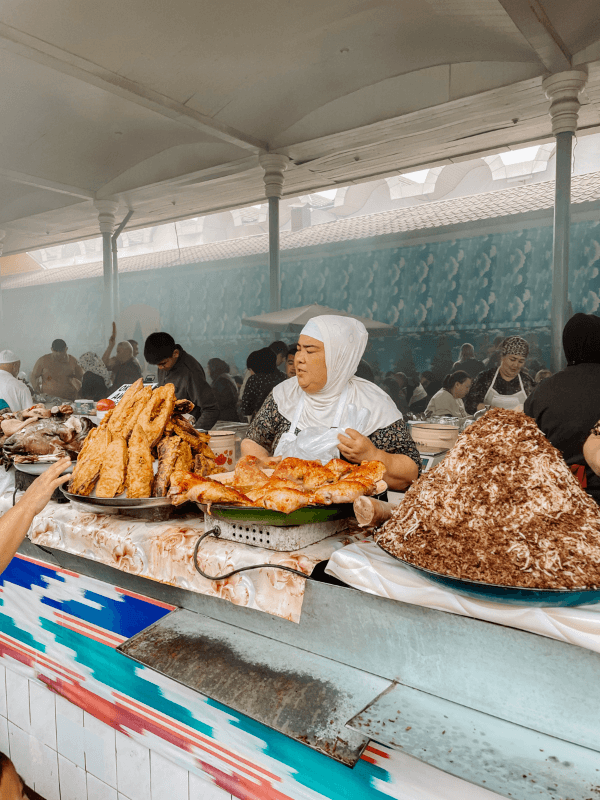

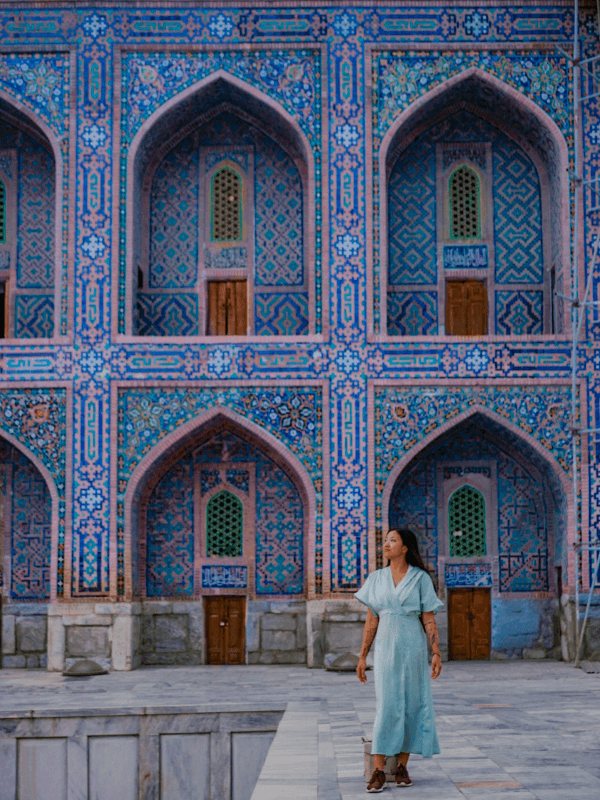
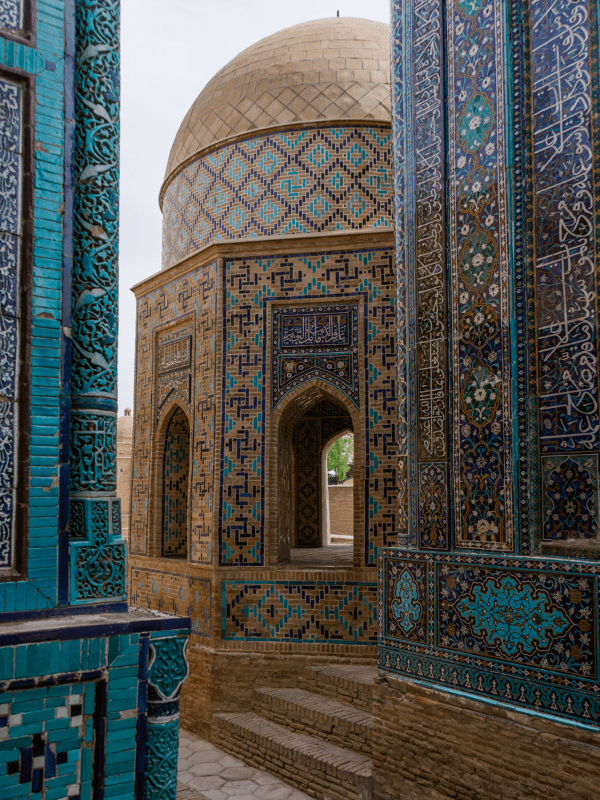
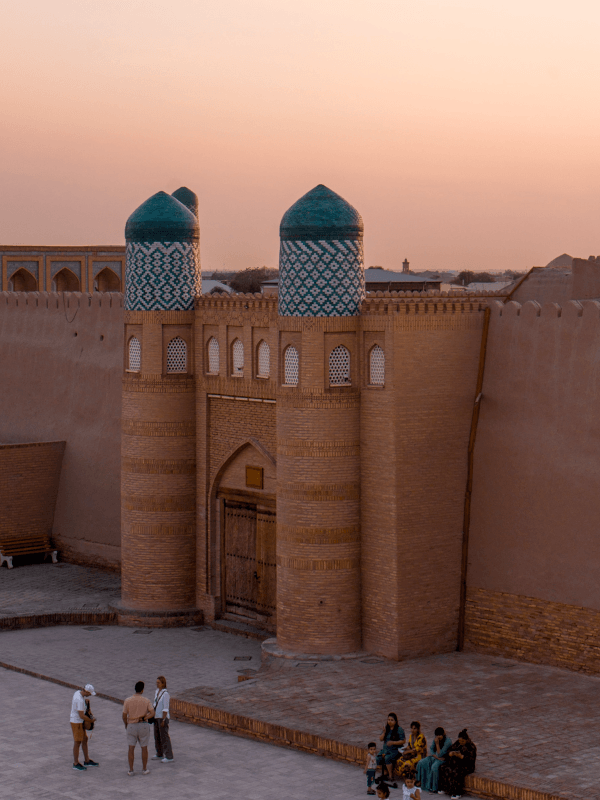
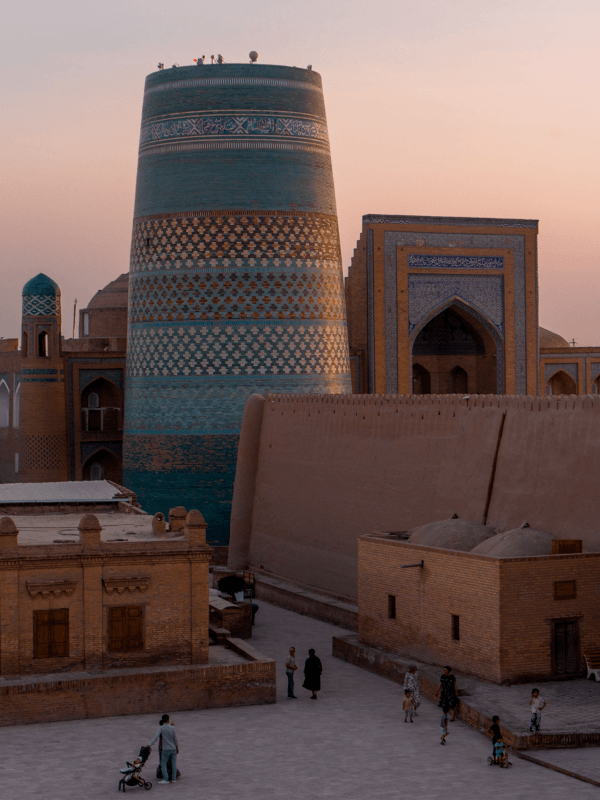
scott says
Great itinerary – definitely makes me want to go!
maxxwel says
very nice blog